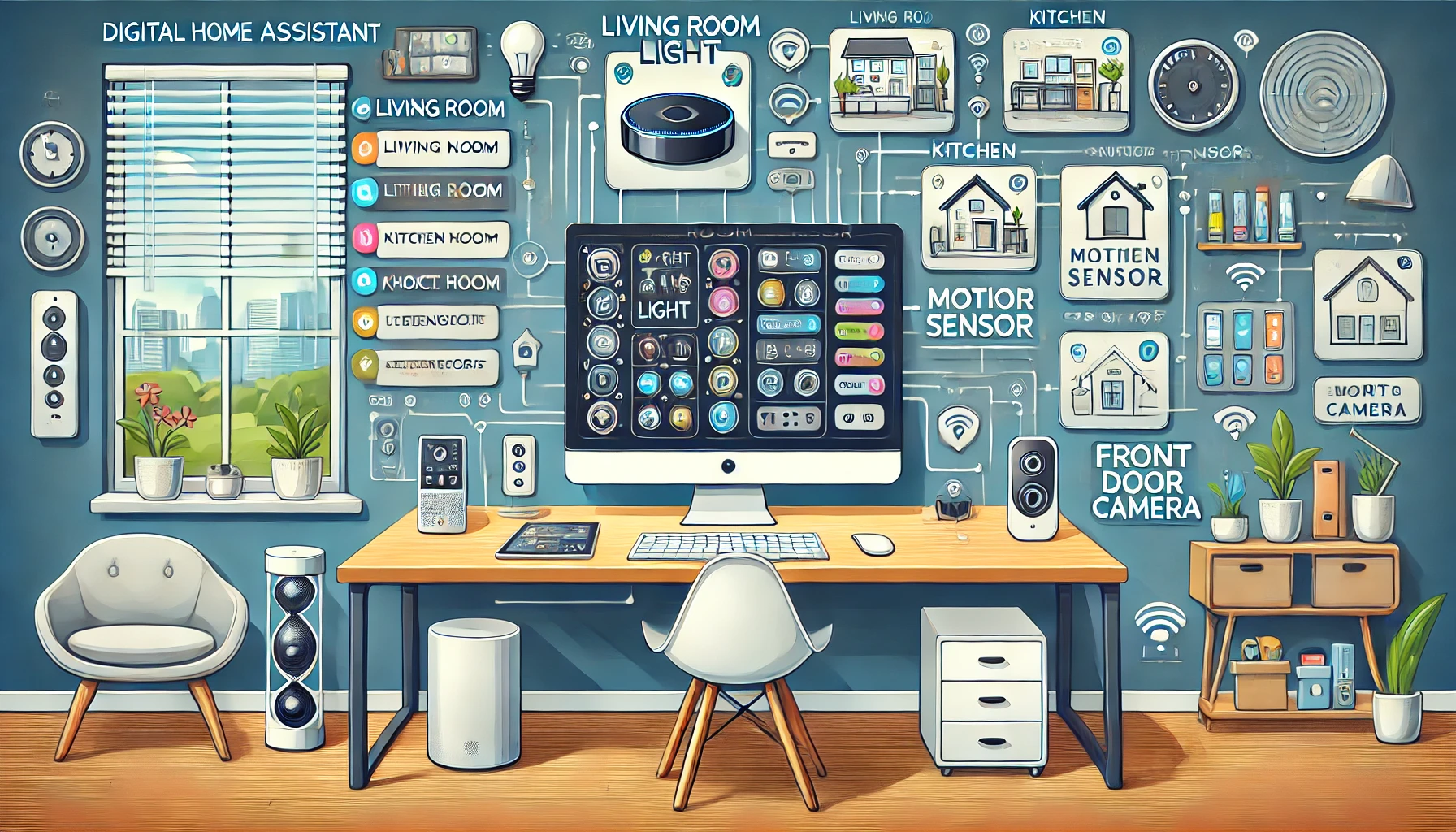Home Assistant: Best Practices for Naming Conventions
 DensTechDen
DensTechDen
When managing a smart home setup, having a clear and consistent naming convention for devices and device entities can be the difference between smooth, frustration-free automation and chaotic confusion. Home Assistant, a popular open-source platform for smart home management, allows users to integrate and control a wide array of smart devices and sensors. However, as the number of connected devices grows, the need for clarity in naming becomes essential. Below, we explore the importance of establishing a clear naming convention for your devices and entities within Home Assistant.
1. Enhanced Readability and Ease of Use
A well-thought-out naming convention improves the readability of your Home Assistant dashboard and configuration files. Instead of seeing a jumbled list of generically named devices like "Switch 1" or "Light 3," a well-named system provides clarity with labels such as "Living Room Ceiling Light" or "Kitchen Outlet." This makes it easier to identify specific devices when creating automations, configuring integrations, or troubleshooting issues.
Example:
Bad Naming:
light_1,sensor2Good Naming:
bedroom_main_light,kitchen_temperature_sensor
2. Improved Automation Creation
Automations are the heart of Home Assistant, enabling smart actions based on triggers and conditions. When your device names clearly convey what they control or monitor, creating automations becomes more intuitive. For instance, writing a condition that checks the status of front_door_motion_sensor is much clearer than interpreting a vague sensor_5.
With well-named entities, you can seamlessly combine devices and create multi-step automations that read like clear instructions. This can save time and reduce the likelihood of errors during configuration.
3. Efficient Troubleshooting and Maintenance
If a device stops responding or an automation fails, having a clear naming convention can significantly speed up troubleshooting. Consider how confusing it would be to find and diagnose an issue if you only had names like light_7 or temp_sensor_3 in your logs. A structured naming scheme, on the other hand, lets you quickly identify which device or entity is causing the problem.
Scenario: When analyzing logs or reviewing system health reports, having device names such as garage_door_opener instead of device_25 helps you instantly recognize where an issue might be located.
4. Scalability and Organization
Smart home setups often start small but can grow quickly. As you add more rooms, devices, and automations, maintaining a clear naming strategy becomes crucial for scalability. Without it, adding new devices might lead to a haphazard naming system that becomes increasingly difficult to manage.
A consistent naming convention also makes it easier to share your Home Assistant configuration with others or seek help from the Home Assistant community. When fellow users see well-organized and comprehensible entity names, providing assistance or recommendations is more straightforward.
5. Tips for Establishing a Naming Convention
Creating a useful naming scheme for your Home Assistant setup involves a few best practices:
Be Descriptive but Concise: Include key information, such as the room and the device type (e.g.,
living_room_motion_sensor).Use Consistent Formats: Decide on a structure, such as
room_type_function(e.g.,bedroom_light_ceiling), and stick to it.Avoid Special Characters: While Home Assistant supports various characters, sticking to underscores and avoiding spaces or unusual characters improves compatibility.
Differentiate Entity Types: Use prefixes or suffixes to differentiate between similar devices. For instance,
outdoor_camandoutdoor_lightcan clearly represent two different functionalities in the same area.
6. Example Naming Conventions
Below is an example template for naming conventions:
Lights:
room_light_location(e.g.,kitchen_light_ceiling)Sensors:
room_sensor_type(e.g.,garage_sensor_motion)Switches:
room_device_type(e.g.,patio_switch_fan)Cameras:
location_camera(e.g.,front_door_camera)
7. Conclusion
The value of a clear and consistent naming convention in Home Assistant goes beyond aesthetics; it lays the groundwork for a well-organized, scalable, and user-friendly smart home environment. Properly named devices and entities lead to faster automation creation, easier maintenance, and a better experience for anyone interacting with your smart home system. By investing the time upfront to create a coherent naming strategy, you'll simplify the ongoing management of your smart home and make it far easier to expand in the future.
Embrace clarity, and watch your smart home become not just more capable, but more manageable and enjoyable.
Subscribe to my newsletter
Read articles from DensTechDen directly inside your inbox. Subscribe to the newsletter, and don't miss out.
Written by
